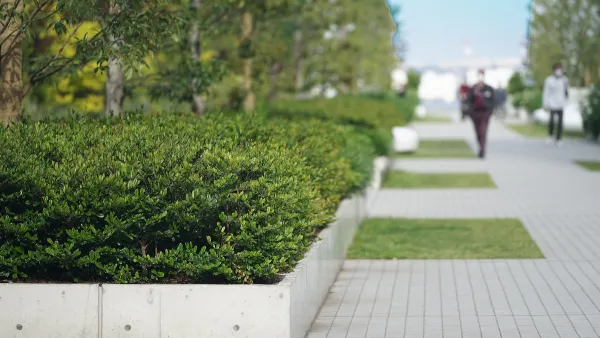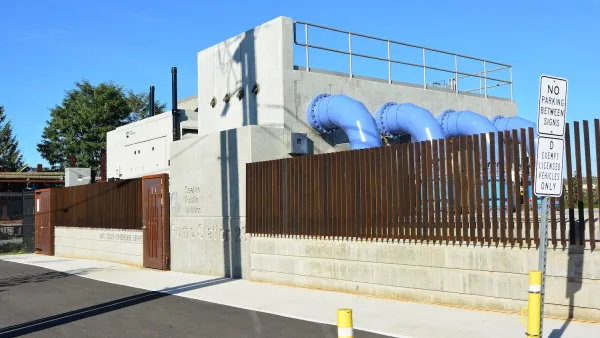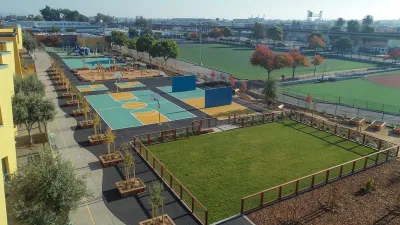How important are the names we use? As Shakespeare said, "What's in a name? That which we call a rose by any other name would smell as sweet." I’ve been struck by this thought recently as I’ve been considering the myriad of organizations and stakeholders trying to have their particular term for stormwater management techniques be more widely adopted in the nomenclature.
How important are the names we use? As Shakespeare said, "What's in a name? That which we call a rose by any other name would smell as sweet." I've been struck by this thought recently as I've been considering the myriad of organizations and stakeholders trying to have their particular term for stormwater management techniques be more widely adopted in the nomenclature.
For example, in one corner there is the low impact development contingent. They want developers to installing a range of natural stormwater approaches that allows the land to act as a sponge and soak up runoff. New Urbanists recently launched "Light Imprint New Urbanism," a new term for "a development technique which aims to lie lightly on the land." I've even entered the fray with the term "site-specific strategies" for those stormwater design solutions that can be incorporated into compact urban areas.
Aren't we all trying to say the same thing to developers, architects, town planners, local governments and everyone else who may be interested? "Hey, look, people! You can have good urban form and manage stormwater on-site!"
It seems to me that the issue is not what these approaches are called, but rather: are they allowed? From what I've seen, the approaches that can manage stormwater runoff on-site, such as strategies that infiltrate, evaportranspirate, or retain runoff for later reuse, are simply not allowed in many communities. They are not allowed because stormwater regulations have not yet recognized, agreed on, or measured the effectiveness of these strategies.
It's an easier proposition to say that a detention basin of a certain size will effectively manage runoff from X number of acres. Data on detention and retention ponds most readily fit into runoff models and permit processes, thereby becoming the path of least resistance. Further cementing these practices are manuals that describe these ponds as "best management practices" for stormwater management. Many of these structural stormwater practices can be bad for urban form – and placemaking in general-- because they require significant land and often don't work for small sites, such as infill or downtown revitalization projects.
Finally, some of these on-site stormwater water approaches, such as rain gardens or grass swales, can trigger other regulations, such as underground injection control requirements, which were originally intended as waste disposal mechanisms-think gas stations or oil wells. If I were a developer, think of the hurdles I would need to clear to install a rain garden-and have it count against my stormwater requirements.
I'm now asking myself if we aren't all wasting time and diluting the importance of our collective message by arguing over what to call these approaches. I think Shakespeare got it right-worry less about what we call things and more about what they are. Don't you think it's time we stop discussing what we call these approaches and start fixing our federal, state, and local water regulations so these approaches can start showing up in new developments?

Planetizen Federal Action Tracker
A weekly monitor of how Trump’s orders and actions are impacting planners and planning in America.

Map: Where Senate Republicans Want to Sell Your Public Lands
For public land advocates, the Senate Republicans’ proposal to sell millions of acres of public land in the West is “the biggest fight of their careers.”

Restaurant Patios Were a Pandemic Win — Why Were They so Hard to Keep?
Social distancing requirements and changes in travel patterns prompted cities to pilot new uses for street and sidewalk space. Then it got complicated.

Platform Pilsner: Vancouver Transit Agency Releases... a Beer?
TransLink will receive a portion of every sale of the four-pack.

Toronto Weighs Cheaper Transit, Parking Hikes for Major Events
Special event rates would take effect during large festivals, sports games and concerts to ‘discourage driving, manage congestion and free up space for transit.”

Berlin to Consider Car-Free Zone Larger Than Manhattan
The area bound by the 22-mile Ringbahn would still allow 12 uses of a private automobile per year per person, and several other exemptions.
Urban Design for Planners 1: Software Tools
This six-course series explores essential urban design concepts using open source software and equips planners with the tools they need to participate fully in the urban design process.
Planning for Universal Design
Learn the tools for implementing Universal Design in planning regulations.
Heyer Gruel & Associates PA
JM Goldson LLC
Custer County Colorado
City of Camden Redevelopment Agency
City of Astoria
Transportation Research & Education Center (TREC) at Portland State University
Camden Redevelopment Agency
City of Claremont
Municipality of Princeton (NJ)





























